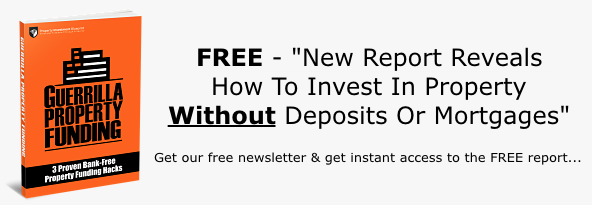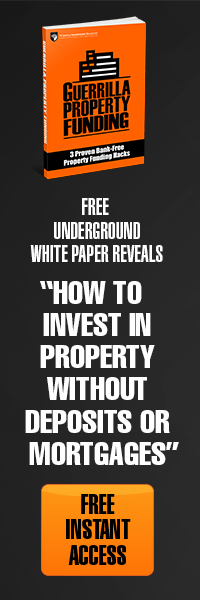
The Only Investment Property Calculator You'll Ever Need!
All the free investment property calculators you'll ever need... and all on one page!
There are several different ways of calculating the performance of a property investment. Some methods are better for calculating performance than others.
Gross rental yield is OK as a very rough guide, but net rental yield is much better. The return on investment -- AKA 'Cash on Cash' -- method takes into account 'gearing' or 'leverage': the lovely principle of borrowing to increase your return.
The important thing is that you choose a method and stick to it so that for each transaction, you are comparing apples with apples!
Gross Rental Yield Investment Property Calculator
This investment property calculator works out the gross rental yield. Gross rental yield is a measurement used to compare the potential returns of different properties.
Although gross rental yield is probably the most commonly used method, it is pretty crude. It should be treated with caution though it doesn't take into account your monthly running costs.
For example, if there is a £200 monthly block management fee then what appeared to be a good yield is not so good!
Formula for Gross Rental Yield
(Monthly rent * 12) / Cost of property = Gross yield
The yields that investors look for will differ depending on the type of property that they are looking at. For example the tolerable yield for a high-end apartment in central London (where you might expect good capital growth) will be less than if you were looking at an HMO investment.
As a rule of thumb, the minimum gross rental yield would normally be about 8%. But take into account prevailing interest rate and other monthly expenses. A good yield might be considered to be over 10% and high yield 12% +.
I would only ever use gross yield as a very rough indicator... net yield is better.
Gross Rental Yield Example
So, imagine we're looking at a property costing £100,000.
The anticipated monthly rental is £500 so multiplying this by 12 gives us an annual rent of £6,000.
Now dividing the annual rent by the property cost gives us 0.06. Multiply by 100 to get a percenctage... 6%.
This is a terrible gross yield, so if buying this for a cash-flow investment, you'd probably want to give it a wide berth.
Net Rental Yield Investment Property Calculator
This investment property calculator works out the net rental yield. Net rental yield is a much better gauge of potential returns than the gross rental yield. It takes into account the costs of buying and the monthly running costs so is far more accurate.
In the net rental yield formula below, running costs are things like...
- Insurance
- maintenance
- ground rent
- service charges
- allowance for empty periods (voids). Allowing 10% of rent is normal.
- letting agent fees.
Purchase costs are things like...
Formula for Net Rental Yield
((Monthly rent - running costs) * 12) / (Cost of property + purchase costs) = Net yield
Net Rental Yield Example
Continuing with our example above of a property costing £100,000 renting at £500.
Our monthly running costs are as follows:
Letting agency fee: £50 (10% of rent)
Insurance: £15
Maintenance: £30
Void period: £50 (budget for 10% void)
TOTAL = £145
Now, subtract the running costs from the monthly rent of £500 to give £355 and multiply by 12 to get £4,260.
Now consider that the purchase costs for this property will be...
Solicitor: £700
Mortgage valuation: £200
TOTAL = £900
Adding this to the purchase price gives us £100,900
And finally dividing the net monthly income by the total purchase outlay: £4,260 / £100,900 = 0.42
Multiplying by 100 gives us our percentage... 4.2%
So you can see that our borderline gross rental yield looks very bad once the running costs are considered... good job we checked it!
Return on Investment Calculator
This investment property calculator works out the return on investment or cash on cash return. Return on investment (ROI) is the method preferred by many investors for calculating property investment performance.
It gives an indication of how much income we are receiving in a given year, in relation to the initial investment amount. It also takes account of any leverage (lending) on the property.
This method gives us a much clearer idea of the return we are actually getting on our investment. But it does still ignore factors like equity in the property and tax benefits etc.
Formula for Return on Investment
(Income / Expenses) x 100 = Return on investment
Return on Investment Example
So, first calculate the cash flow before taxes.
Let's assume we're buying the property with a £75,000 mortgage at a rate of 5%. This gives us an annual interest of £3,750 with a monthly payment of £312.50.
Subtract the mortgage interest payments from the gross annual income: £6,000 - £3,750 = £2,250.
Now, to get our cash on cash return, simply divide our net cash flow by our initial investment. (We're buying using a 75% LTV mortgage and so need a £25,000 deposit.)
£2,250 divided by £25,000 gives a cash on cash return of 0.09, or 9%.
Cheap Property Finance
Here at PiB, we provide specialist mortgages and finance to property investors and developers just like you, in partnership with one of the most experienced advisors in the UK. Request a free quote today.
<< Back to Property Investment Guide from Investment Property Calculator
<< Back to Property Investment Blueprint from Investment Property Calculator



